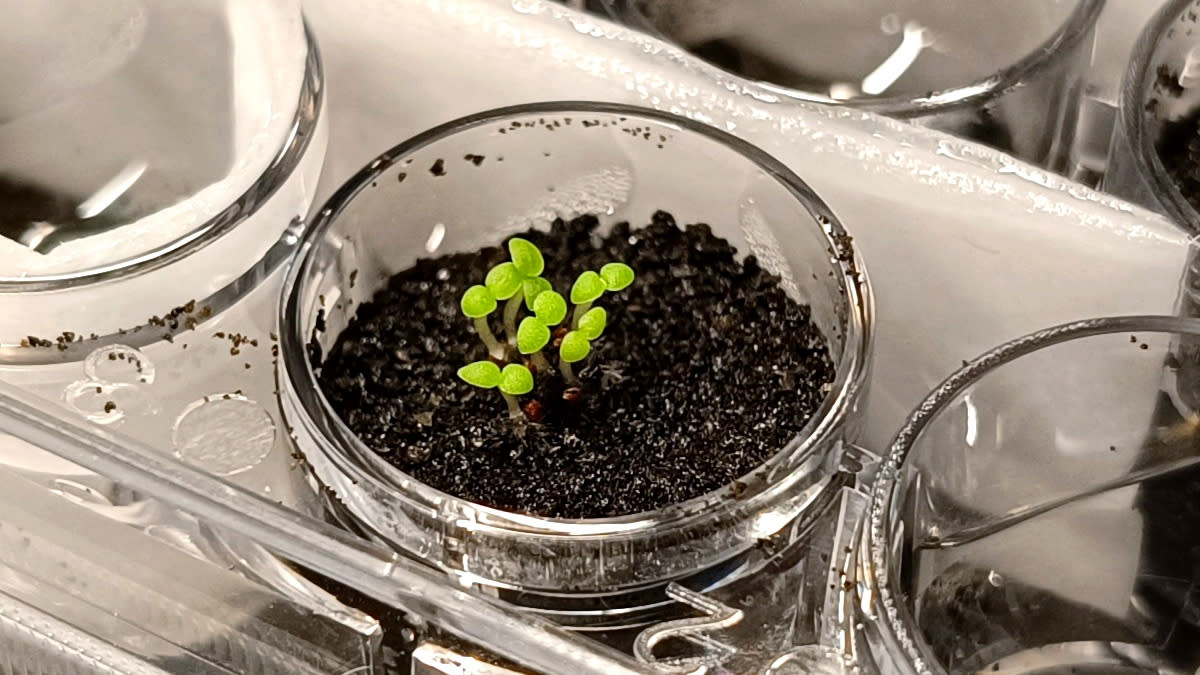Astronauts might be able to grow plants on the moon, thanks to a few Earth microbes

Microbes could help unlock vital nutrients in lunar soil to one day help farms sustain astronaut crews on the moon, a new study reports.
Previous research found that lunar soil possesses a number of elements vital for plant growth. This has raised hopes that greenhouse farms on the moon could make use of local resources to help lunar bases sustain life, instead of astronauts having to lug huge amounts of soil or bulky hydroponic systems from Earth.
"The advantage of growing plants on the moon is not limited to providing food for the astronauts who live in the lunar base," study lead author Yitong Xia, of China Agricultural University in Beijing, told Space.com. "It could also help to refresh the air by providing oxygen, purify water and even provide emotional comfort."
Related: Scientists grow 1st plants in moon soil
However, prior experiments have also shown that lunar soil is bad at hosting crops. Not only does it lack carbon and nitrogen compounds that are necessary for plant growth, but what vital elements it does have, such as phosphorus, are mostly locked within insoluble compounds that plants find difficult to absorb.
"If we grow plants directly in lunar regolith, their growth would be limited, and they would die early," Xia said.
In the new study, Xia and colleagues explored ways to make lunar soil more fertile. They noted that microbes on Earth helped make our planet more habitable over billions of years by physically and chemically altering hard rock into porous, biologically active soil. Flying microbes to the moon to liberate insoluble elements would prove much easier than flying tons of those fertilizer elements there from Earth, Xia explained.
The researchers experimented with Chinese volcanic powder whose composition was similar to samples collected by the Apollo 14 mission in 1971. They investigated whether five species of bacteria could convert insoluble phosphorus in this simulated lunar soil into a soluble form that plants could use.
"These bacteria are common species in microbial fertilizers of agriculture," Xia said.
The scientists mixed samples of simulated lunar soil with the microbes in a sugary broth for 21 days. They found that three species of bacteria more than doubled the amount of soluble phosphorus within 10 to 21 days. The microbes apparently helped make the soil more acidic, liberating the phosphorus from the compounds it was trapped within.
RELATED STORIES:
— How astronauts could farm on the moon with lunar soil nutrients
— NASA may build more than one moon base for Artemis lunar missions
— Seeds launching to the moon in 2025 will test plant resilience
The researchers next grew a relative of tobacco known as benth in simulated lunar soil treated with these three species of bacteria for 18 days. They found that, after 24 days of growth, levels of chlorophyll — the pigment that helps plants harvest energy from light — in plants with these live bacteria were about double those of plants grown in simulated lunar soil with dead bacteria.
In addition, plants grown in simulated lunar soil with the three bacteria for 18 days tended to have longer stems and roots after six days of growth. They were also typically heavier and had wider clusters of leaves after 24 days of growth, compared to plants grown in simulated lunar soil with dead bacteria.
In the future, the scientists would like to mix these bacteria with algae or compost to see how that might further improve plant growth, Xia said.
The scientists detailed their findings online today (Nov. 9) in the journal Communications Biology.

